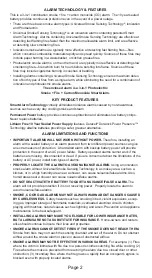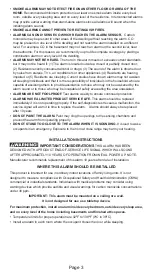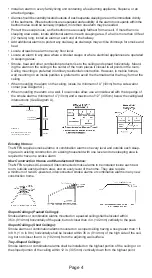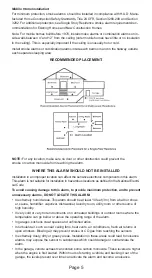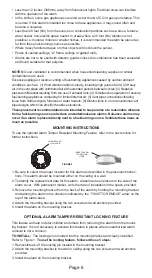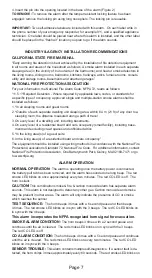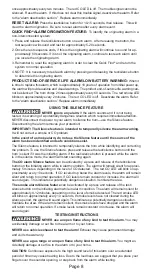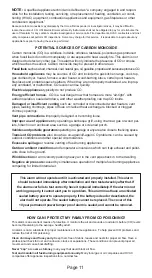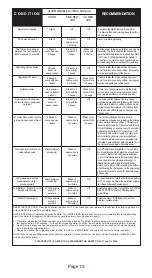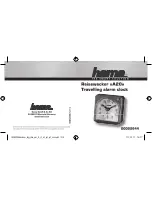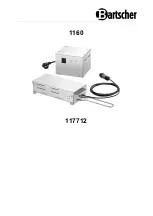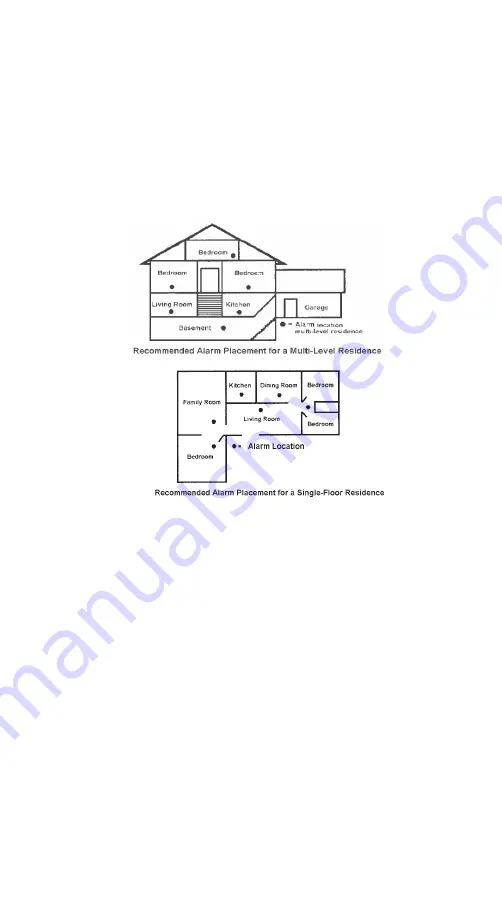
Page 5
Mobile Home Installation:
For minimum protection, smoke alarms should be installed in compliance with H .U .D . Manu-
factured Home Construction Safety Standards, Title 24 CFR, Section 3280.208 and Section
3282 . For additional protection, see Single Story Residence smoke alarm requirements/rec-
ommendations for Existing Homes and New Construction Homes .
Note: For mobile homes built before 1978, install smoke alarms or combination alarms on in-
side walls between 4” and 12” from the ceiling (older mobile homes have little or no insulation
in the ceiling). This is especially important if the ceiling is unusually hot or cold.
Install smoke alarms or combination alarms inside each bedroom and in the hallway outside
each separate sleeping area .
RECOMMENDED PLACEMENT:
NOTE:
For any location, make sure no door or other obstruction could prevent the
smoke or carbon monoxide from reaching the alarm .
WHERE THIS ALARM SHOULD NOT BE INSTALLED
Installation in an improper location can affect the sensitive electronic components in this alarm .
This alarm is not suitable for installation in hazardous locations as defined in the National Electri-
cal Code .
To avoid causing damage to this alarm, to provide maximum protection, and to prevent
unnecessary alarms, DO NOT LOCATE THIS ALARM:
• In extremely humid areas. This alarm should be at least 10 feet (3m) from a bath or show-
er, sauna, humidifier, vaporizer, dishwasher, laundry room, utility room or other source of
high humidity .
• In very cold or very hot environments or in unheated buildings or outdoor rooms where the
temperature can go below or above the operating range of the alarm .
• In garages, kitchens crawl spaces and unfinished attics.
• In turbulent air, such as near ceiling fans, heat vents, air conditioners, fresh air returns or
open windows . Blowing air may prevent smoke or CO gas from reaching the sensors .
• In extremely dusty, dirty or greasy areas . Installation in these areas could lead to nuisance
alarms, may expose the sensor to substances which could damage or contaminate the
alarm .
• In the garage, vehicle exhaust can contain some carbon monoxide . These levels are higher
when the engine is first started. Within hours of starting a vehicle and backing it out of the
garage, the levels present over time can activate the alarm and become a nuisance .
Содержание MPC322S
Страница 14: ...Page 14...


